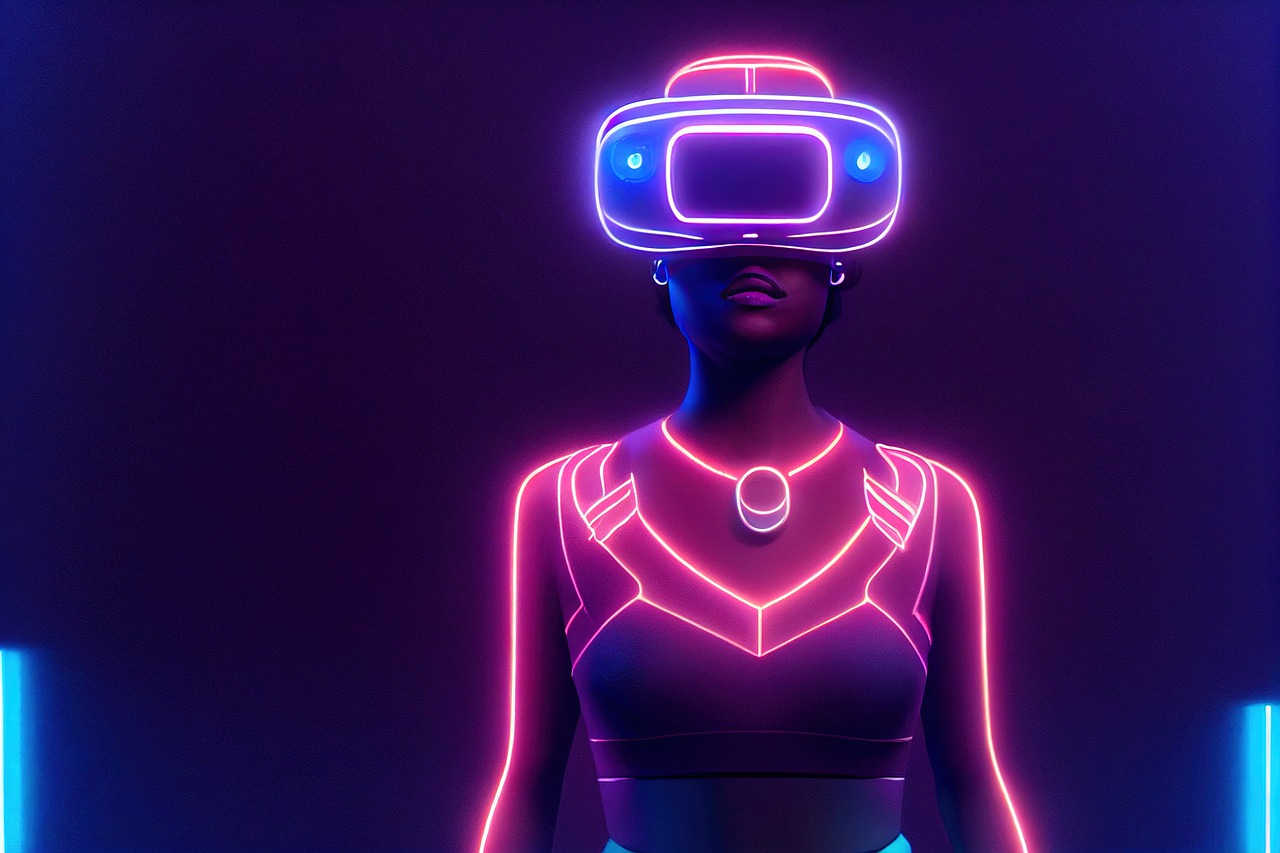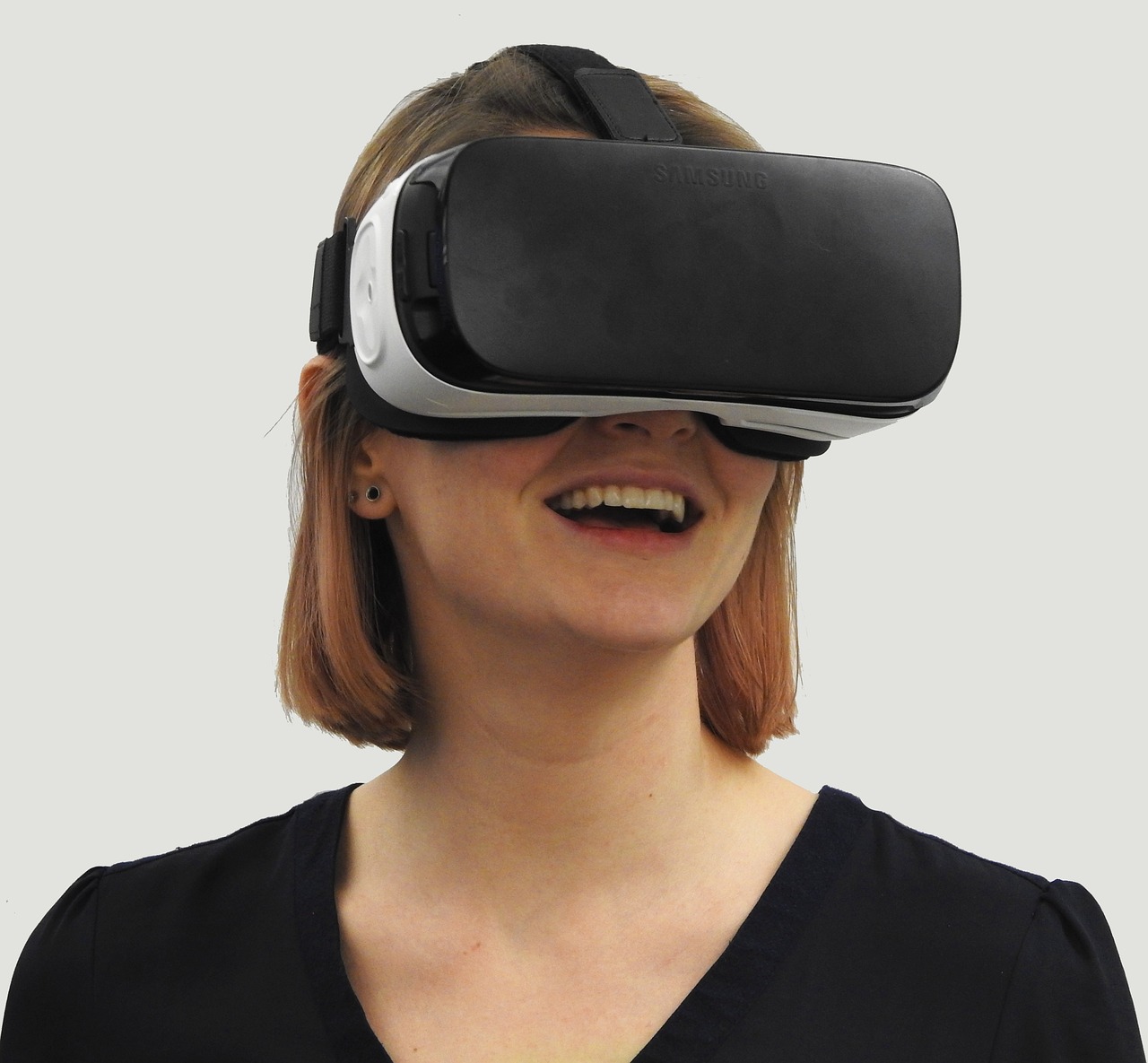Virtual Reality: Understanding the Safety Risks
Virtual Reality (VR) has revolutionized the way we experience digital content, offering immersive environments that transport users into fantastical worlds. However, as thrilling as these virtual experiences can be, it's essential to recognize that they come with a set of safety risks that users need to be aware of. From physical injuries to psychological effects, understanding these risks is crucial for anyone looking to dive into the VR universe. This article will explore the various safety concerns associated with VR technology, helping users navigate their virtual adventures while minimizing potential dangers.
Engaging in VR can lead to various physical injuries, including falls and collisions. When users are immersed in a virtual world, their awareness of the real environment can diminish significantly. This disconnect can result in accidents, especially if the play area is not adequately cleared or if users are not aware of their physical surroundings. It's crucial for users to establish a safe play area by removing obstacles and ensuring they have enough space to move around freely. Additionally, wearing appropriate footwear and avoiding slippery surfaces can further enhance safety during VR sessions.
While VR can be an exhilarating experience, it can also induce a range of psychological effects, such as anxiety or disorientation. For some users, the immersive nature of VR can lead to feelings of unease, especially in high-stress scenarios or when dealing with intense virtual environments. Recognizing these potential outcomes helps users prepare for and manage their emotional responses while using VR systems. It's important to remember that taking breaks and practicing mindfulness can help mitigate these feelings and enhance the overall experience.
One of the most common issues among VR users is motion sickness, which is caused by a disconnect between visual stimuli and physical movement. When users move their heads or bodies in the virtual world but do not experience the corresponding physical movement, it can lead to discomfort. Awareness of this condition can help users take preventive measures during their VR sessions. For instance, opting for experiences that minimize rapid movements or using devices designed to reduce motion sickness can significantly improve comfort levels.
Understanding the symptoms of motion sickness is essential for a comfortable VR experience. Common symptoms include:
- Dizziness
- Nausea
- Headaches
- Fatigue
By recognizing these signs early on, users can identify when they need to take breaks or adjust their VR settings for comfort. It’s not just about enjoying the experience; it’s about ensuring that the experience doesn’t lead to discomfort or health issues.
Implementing effective strategies can significantly reduce the likelihood of experiencing motion sickness during VR use. Here are some useful tips:
- Gradual Acclimatization: Start with shorter sessions and gradually increase the duration as your body adapts.
- High-Quality Hardware: Invest in high-quality VR headsets that offer smoother visuals and better tracking.
- Focus on Stable Environments: Choose experiences that feature less rapid movement and more stable environments.
While VR can foster social interactions, it may also lead to feelings of isolation. Users can easily become absorbed in their virtual worlds, potentially neglecting their real-world relationships. It’s essential to strike a balance between virtual engagements and real-life connections to maintain healthy relationships. Consider scheduling regular meetups with friends or family to ensure that you’re not losing touch with the people who matter most.
Prolonged use of VR technology raises concerns about potential long-term health effects, including eye strain and musculoskeletal issues. Understanding these risks is essential for responsible usage. Users should be proactive in managing their VR habits to avoid any adverse effects that could arise from extended use.
Extended VR sessions can lead to eye strain and fatigue. The immersive nature of VR often requires users to focus on screens that are very close to their eyes for extended periods. Users should be aware of the importance of taking regular breaks to mitigate these effects and maintain eye health. A good rule of thumb is the 20-20-20 rule: every 20 minutes, take a 20-second break and look at something 20 feet away.
Maintaining proper posture during VR use is crucial to prevent musculoskeletal strain. Users should be educated on ergonomic practices to enhance comfort and safety while immersed in virtual environments. This includes setting up the VR space correctly, using supportive seating when needed, and being mindful of body positioning to avoid strain.
Q: Can I use VR if I have a history of motion sickness?
A: Yes, but it’s important to start slowly and use preventive measures to minimize discomfort.
Q: How long should I play VR to avoid eye strain?
A: Taking breaks every 20 minutes and following the 20-20-20 rule can help reduce eye strain.
Q: Is VR safe for children?
A: VR can be safe for children, but it’s essential to monitor their usage and ensure they take regular breaks.

Physical Risks of VR
Engaging in Virtual Reality (VR) can be an exhilarating experience, transporting users to fantastical worlds and allowing them to interact with environments in ways that traditional media cannot. However, this immersive technology is not without its physical risks. Users often forget that while they are fully engaged in a virtual landscape, their actual surroundings remain unchanged, which can lead to various injuries. Imagine walking through a beautiful forest in VR, only to trip over your own coffee table in the real world. This disconnect can result in falls, collisions, or even bumps and bruises.
One of the most significant concerns is the risk of falls. When users are fully immersed, they may lose awareness of their physical space. For instance, a user might step backward while trying to dodge an imaginary object, leading to a painful spill. In fact, a study found that nearly 30% of VR users reported experiencing some form of physical injury due to their lack of spatial awareness while using VR headsets.
Moreover, collisions with furniture or other people can occur. It’s essential for users to establish a safe play area, free of obstacles, to minimize these risks. A good practice is to create a designated VR zone that is spacious and clearly marked, ensuring that users can move freely without the fear of hitting something. Additionally, using boundary systems available in many VR setups can alert users when they are nearing the edge of their designated space.
Another physical risk involves the wear and tear on the body. Prolonged use of VR can lead to muscle strain, particularly in the neck and shoulders, as users often adopt awkward postures while immersed in their experiences. It's crucial for users to be mindful of their body mechanics. Engaging in regular stretching and taking breaks can help alleviate some of these physical strains. Here are some tips to consider:
- Take Frequent Breaks: Every 30 minutes, step away from the headset and stretch your muscles.
- Stay Hydrated: Drink water to keep your body functioning optimally.
- Mind Your Posture: Keep a straight back and avoid slouching while using VR.
It's also worth noting that VR technology can inadvertently cause disorientation. Users might feel dizzy or off-balance after removing their headsets, which can lead to further risks if they attempt to move immediately. This sensation is often temporary but can be unsettling. To combat this, users should allow themselves a moment to readjust to their surroundings before getting up or moving around.
In conclusion, while VR offers an incredible escape from reality, it’s vital to remain aware of the physical risks involved. By taking precautions, setting up a safe environment, and listening to your body, you can enjoy the wonders of virtual reality without compromising your safety. As with any technology, a little mindfulness goes a long way in ensuring a fun and injury-free experience.
Q: What should I do if I feel dizzy after using VR?
A: If you feel dizzy, take off the headset and sit down for a few minutes. Focus on a stable object in your environment to help regain your balance.
Q: How can I prevent injuries while using VR?
A: Establish a clear play area, take regular breaks, and ensure you maintain good posture while using the headset.
Q: Are there specific exercises to help with VR-related muscle strain?
A: Yes, simple stretches for the neck, shoulders, and back can help alleviate strain. Consider consulting with a physical therapist for personalized exercises.

Psychological Effects
When we dive into the world of Virtual Reality (VR), we often think about the exciting experiences it offers, but we must also consider the that can arise from prolonged use. After all, stepping into a digital realm can feel like a thrilling adventure, but it can also lead to unexpected emotional responses. Have you ever felt a rush of anxiety or confusion while navigating a virtual landscape? You're not alone. Many users report a range of feelings that can influence their overall experience and well-being.
One of the most significant psychological effects of VR is the sense of disorientation. This isn't just about feeling lost in a game; it can manifest as a real struggle to readjust when returning to the physical world. Imagine walking through a virtual forest, feeling the wind and hearing the rustle of leaves, only to suddenly find yourself back in your living room. The abrupt transition can be jarring, leading to a feeling of disconnection from reality. This sensation can sometimes trigger anxiety, especially for those who are already predisposed to such feelings.
Another common psychological effect is motion sickness, which we’ll dive deeper into shortly. But it’s worth noting that this isn’t just a physical ailment; it can have psychological repercussions as well. Users may become anxious about using VR again, fearing the nausea or dizziness that can accompany their immersive experiences. This fear can create a cycle of avoidance, where users shy away from VR altogether, missing out on the potential benefits of this technology.
Moreover, it’s essential to recognize the social implications of VR. While it can create opportunities for connection, it can also lead to feelings of isolation. Imagine spending hours in a virtual world, interacting with avatars and engaging in digital activities, only to realize that your real-world relationships are suffering. This disconnect can lead to loneliness and a sense of alienation. It’s crucial for users to find a balance between their virtual interactions and their real-life connections to maintain a healthy social life.
To sum up, while VR offers an exhilarating escape from reality, it’s vital to stay aware of the potential psychological effects it can have. By understanding these impacts, users can better prepare themselves and take steps to mitigate any negative experiences. This awareness can transform VR from a source of anxiety into a safe haven for exploration and fun.
As we navigate through the potential challenges of VR, it’s also helpful to consider some strategies for managing these psychological effects. Here are a few tips:
- Set Time Limits: Avoid long sessions that can lead to disorientation and anxiety.
- Take Breaks: Regular breaks can help you readjust to the real world and minimize feelings of nausea.
- Engage with Real-World Connections: Balance your virtual experiences with time spent with family and friends in the physical world.
With these strategies in mind, users can enhance their VR experience while being mindful of their mental health. Understanding the psychological effects of VR is not just about recognizing the risks; it's about empowering ourselves to enjoy this incredible technology responsibly.
Q: Can VR cause long-term psychological issues?
A: While most users do not experience long-term issues, some may develop anxiety or discomfort related to VR use. It's essential to monitor your feelings and take breaks as needed.
Q: How can I tell if I'm experiencing motion sickness in VR?
A: Symptoms include dizziness, nausea, and disorientation. If you notice these feelings, it's best to take a break and allow your body to readjust.
Q: Is it safe to use VR for extended periods?
A: It can be safe if you take regular breaks and listen to your body. Be aware of how you're feeling and adjust your usage accordingly.

Motion Sickness in VR
This article explores the safety risks associated with virtual reality (VR) technology, including physical, psychological, and social concerns, and offers insights into how users can mitigate these dangers.
Engaging in VR can lead to various physical injuries, including falls and collisions. Understanding these risks is crucial for users to ensure a safe immersive experience while navigating virtual environments.
VR can induce a range of psychological effects, such as anxiety or disorientation. Recognizing these potential outcomes helps users prepare for and manage their emotional responses while using VR systems.
Have you ever felt that uneasy sensation in your stomach while playing a video game or watching a movie in 3D? Well, that same feeling can strike when you dive into the world of Virtual Reality (VR). Motion sickness in VR is a prevalent issue that arises from a disconnect between what your eyes see and what your body feels. Imagine your eyes being on a thrilling roller coaster ride while your body is sitting still in your living room. This mismatch can lead to discomfort, making your VR experience less enjoyable and even causing you to step away from it altogether.
So, what exactly causes this peculiar phenomenon? The brain relies heavily on visual input to determine motion. When you wear a VR headset, your eyes are bombarded with images that suggest rapid movement, but your body remains stationary. This confusion can trigger symptoms of motion sickness, which can range from mild to severe. It's essential to recognize these symptoms early on to ensure you can enjoy your virtual adventures without the unpleasant side effects.
Understanding the symptoms of motion sickness is crucial for every VR enthusiast. Here are some common signs to watch out for:
- Dizziness: A spinning sensation that can leave you feeling unsteady.
- Nausea: That uncomfortable feeling in your stomach that can lead to vomiting.
- Headaches: A throbbing pain that can occur due to prolonged use.
- Fatigue: A general sense of tiredness and lethargy.
If you experience any of these symptoms, it's a sign that your body is reacting to the VR environment. Taking a break or adjusting your settings can often help alleviate these feelings.
So, how can you prevent motion sickness and enjoy VR to its fullest? Here are some effective strategies:
- Gradual Acclimatization: Start with shorter sessions and gradually increase the duration as your body adjusts.
- High-Quality Hardware: Invest in a good VR headset with high refresh rates and low latency to minimize discomfort.
- Stable Environments: Stick to VR experiences that offer stable visuals and minimize rapid movements.
- Frequent Breaks: Take regular breaks to give your body a chance to recalibrate.
By implementing these strategies, you can significantly reduce the likelihood of experiencing motion sickness during your VR sessions. Remember, the goal is to immerse yourself in a captivating virtual world, not to feel queasy while doing so!
While VR can foster social interactions, it may also lead to feelings of isolation. Users should be mindful of balancing their virtual engagements with real-world connections to maintain healthy relationships.
Prolonged use of VR technology raises concerns about potential long-term health effects, including eye strain and musculoskeletal issues. Understanding these risks is essential for responsible usage.
Extended VR sessions can lead to eye strain and fatigue. Users should be aware of the importance of taking regular breaks to mitigate these effects and maintain eye health.
Maintaining proper posture during VR use is crucial to prevent musculoskeletal strain. Users should be educated on ergonomic practices to enhance comfort and safety while immersed in virtual environments.
Q1: Can anyone experience motion sickness in VR?
A1: Yes, motion sickness can affect anyone, but some individuals are more prone to it than others. Factors such as age, sensitivity to motion, and previous experiences can play a role.
Q2: How long should I use VR to avoid motion sickness?
A2: It's best to start with short sessions of about 10-15 minutes and gradually increase the time as your body gets accustomed to the virtual environment.
Q3: Are there specific VR games that are less likely to cause motion sickness?
A3: Generally, games that involve slower movements and less rapid camera shifts are less likely to induce motion sickness. Look for experiences that emphasize exploration rather than fast-paced action.
Q4: What should I do if I start feeling sick while using VR?
A4: If you begin to feel unwell, take off the headset immediately, rest your eyes, and allow your body to recover. Hydration can also help ease symptoms.

Symptoms of Motion Sickness
This article explores the safety risks associated with virtual reality (VR) technology, including physical, psychological, and social concerns, and offers insights into how users can mitigate these dangers.
Engaging in VR can lead to various physical injuries, including falls and collisions. Understanding these risks is crucial for users to ensure a safe immersive experience while navigating virtual environments.
VR can induce a range of psychological effects, such as anxiety or disorientation. Recognizing these potential outcomes helps users prepare for and manage their emotional responses while using VR systems.
Motion sickness is a common issue among VR users, caused by a disconnect between visual stimuli and physical movement. Awareness of this condition can help users take preventive measures during their VR sessions.
When diving into the world of virtual reality, users may experience a variety of symptoms associated with motion sickness. It's important to recognize these signs early on to enhance your VR experience. Common symptoms include:
- Dizziness: A feeling of lightheadedness that can disrupt your balance.
- Nausea: An unsettling sensation in your stomach that may lead to vomiting.
- Headaches: Discomfort or pain in your head, often exacerbated by prolonged use.
- Fatigue: A sense of tiredness that can stem from overstimulation.
- Disorientation: Confusion about your surroundings, making it hard to focus on real-world elements.
These symptoms can vary in intensity from mild discomfort to severe reactions, depending on the individual and the VR experience. Understanding these symptoms allows users to be proactive: if you start feeling dizzy or nauseous, it’s a good idea to pause your session. Taking breaks not only helps alleviate these symptoms but also allows your body to readjust to the real world.
Moreover, if you find that you frequently encounter motion sickness during VR sessions, it might be beneficial to explore different types of VR content. Some experiences are designed with smoother movements and less rapid camera shifts, which can help minimize discomfort. Always remember, your comfort should be a top priority!
Implementing strategies like gradual acclimatization and using high-quality hardware can significantly reduce the likelihood of experiencing motion sickness during VR use.
While VR can foster social interactions, it may also lead to feelings of isolation. Users should be mindful of balancing their virtual engagements with real-world connections to maintain healthy relationships.
Prolonged use of VR technology raises concerns about potential long-term health effects, including eye strain and musculoskeletal issues. Understanding these risks is essential for responsible usage.
Extended VR sessions can lead to eye strain and fatigue. Users should be aware of the importance of taking regular breaks to mitigate these effects and maintain eye health.
Maintaining proper posture during VR use is crucial to prevent musculoskeletal strain. Users should be educated on ergonomic practices to enhance comfort and safety while immersed in virtual environments.
Q: Can motion sickness occur with all VR experiences?
A: Yes, motion sickness can occur with various VR experiences, particularly those with rapid movements or disorienting visuals.
Q: How can I reduce the risk of motion sickness in VR?
A: Gradually acclimatizing to VR, taking frequent breaks, and using high-quality hardware can help minimize the risk of motion sickness.
Q: Is it normal to feel disoriented after a VR session?
A: Yes, some users may feel disoriented after extended VR use. It's advisable to take breaks and allow your body to adjust.
Q: Are there specific VR games or experiences that are less likely to cause motion sickness?
A: Generally, experiences with slower movements and less intense graphics are less likely to induce motion sickness. Look for games designed with comfort in mind.

Prevention Strategies
When it comes to enjoying the exhilarating world of virtual reality (VR), taking proactive steps to prevent motion sickness and other discomforts can make all the difference. One of the most effective strategies is gradual acclimatization. This means starting with shorter sessions and slowly increasing the duration as your body gets used to the immersive experience. Think of it like training for a marathon; you wouldn't just jump into a 26.2-mile run without preparing your body first, right?
Another crucial aspect is the quality of the VR hardware you use. High-quality headsets are designed with better motion tracking and display technology, which can significantly reduce the chances of discomfort. Investing in a reputable brand can be likened to choosing a reliable car for a long road trip; it just makes the journey smoother and more enjoyable.
Additionally, users should be mindful of their environment. Ensure that the play area is clear of obstacles to prevent physical injuries. This is akin to clearing the clutter from your living room before hosting a gathering; it creates a safer and more enjoyable atmosphere. Moreover, taking regular breaks is essential. Experts recommend the 20-20-20 rule: every 20 minutes, take a 20-second break and look at something 20 feet away to rest your eyes. This simple practice can help mitigate eye strain and fatigue, ensuring your VR experience remains enjoyable.
Finally, staying hydrated and maintaining a comfortable room temperature can also aid in reducing discomfort during VR sessions. Just like you wouldn't run a race in the heat without water, keeping your body well-hydrated and cool is vital for a pleasant VR experience. Remember, the goal is to immerse yourself in the virtual world without the negative side effects that can come with it. By following these prevention strategies, you can enhance your VR adventures and make them safer and more enjoyable.
- What is motion sickness in VR? Motion sickness in VR occurs when there is a disconnect between what your eyes see and what your body feels, leading to symptoms like dizziness and nausea.
- How can I reduce the risk of motion sickness while using VR? Gradual acclimatization, using high-quality hardware, taking regular breaks, and ensuring a clear play area can help reduce motion sickness.
- Is there a recommended duration for VR sessions? It's best to start with shorter sessions of about 15-20 minutes and gradually increase as you become more accustomed to the experience.
- What should I do if I start feeling sick while using VR? If you begin to feel unwell, take a break immediately, hydrate, and rest your eyes. Adjusting the settings or taking a step back from the experience can also help.
- Can VR cause long-term health issues? Prolonged use can lead to eye strain and musculoskeletal issues, so it's important to practice good ergonomics and take regular breaks.

Social Risks and Isolation
While virtual reality (VR) technology opens up incredible avenues for social interaction, it also harbors significant risks related to isolation. Imagine stepping into a vibrant virtual world where you can connect with others, explore new environments, and even engage in thrilling adventures. Sounds amazing, right? But here's the catch: as users become more engrossed in these digital realms, they may inadvertently drift away from their real-world relationships. This phenomenon can create a paradox where individuals feel socially connected in the virtual space yet experience profound loneliness in their actual lives.
One of the main reasons behind this isolation is the immersive nature of VR. When users don a headset, they often lose awareness of their physical surroundings and the people within them. This can lead to a decreased frequency of face-to-face interactions, which are essential for maintaining healthy relationships. It's as if a thick fog has descended upon the user, blurring the lines between virtual camaraderie and real-life companionship.
Moreover, VR can sometimes foster a false sense of community. Users might engage with avatars and personas that feel genuine, but these interactions lack the depth and emotional resonance of in-person relationships. Over time, this can lead to feelings of disconnection and even exacerbate mental health issues such as anxiety and depression. Picture it like this: you’re at a party, surrounded by friends, yet you’re glued to your phone, interacting with someone miles away instead of enjoying the moment. It’s a slippery slope!
To mitigate these risks, it’s crucial for users to strike a balance between their virtual engagements and real-world connections. Here are some strategies to consider:
- Set Time Limits: Allocate specific times for VR use and ensure that you also dedicate time to connect with family and friends in person.
- Engage in Mixed Activities: Participate in both virtual and physical social events to maintain a diverse social life.
- Reflect on Your Emotions: Regularly assess how your VR usage affects your mood and relationships. If you notice negative patterns, it may be time to adjust your habits.
By being proactive and mindful about VR usage, individuals can enjoy the best of both worlds—immersive experiences in virtual environments while nurturing their real-life connections. Remember, while VR can be a fantastic escape, it should never replace the warmth and richness of genuine human interaction.
Q: Can VR be beneficial for social interactions?
A: Yes, VR can enhance social interactions by allowing users to connect with others in shared virtual spaces. However, moderation is key to avoid feelings of isolation.
Q: How can I ensure I maintain my real-world relationships while using VR?
A: Setting time limits for VR use, engaging in mixed activities, and reflecting on your emotional well-being can help maintain a healthy balance.
Q: What are some signs that I may be experiencing social isolation due to VR?
A: Signs may include feeling lonely despite online interactions, neglecting in-person relationships, or experiencing increased anxiety when not using VR.

Long-term Health Concerns
As we dive deeper into the realm of Virtual Reality (VR), it's essential to consider the long-term health concerns that may arise from prolonged usage. While VR offers an incredible escape into immersive worlds, it also comes with potential risks that can affect our well-being over time. One of the most pressing issues is eye strain, which can occur due to the close proximity of screens and the intense focus required during VR experiences. Users may find themselves experiencing discomfort, dryness, or even blurred vision after extended sessions.
Furthermore, musculoskeletal issues can arise as a result of poor posture or repetitive movements while engaging in VR. Imagine spending hours in a virtual environment, hunched over or twisting your body in unnatural ways. This can lead to chronic pain or discomfort in your neck, back, and shoulders. To combat these issues, it's crucial for users to be aware of their body mechanics and to take frequent breaks to stretch and realign their posture.
It's not just physical ailments we need to worry about; mental health can also be impacted by excessive VR use. Users may find themselves feeling more isolated or anxious, especially if they substitute real-world interactions with virtual ones. Maintaining a healthy balance between virtual and real-life engagements is vital for emotional well-being.
To provide a clearer picture of these concerns, let's take a look at a table summarizing the potential long-term health effects associated with VR usage:
| Health Concern | Description | Mitigation Strategies |
|---|---|---|
| Eye Strain | Discomfort, dryness, and blurred vision from prolonged screen exposure. | Take regular breaks, adjust screen settings, and maintain proper distance. |
| Musculoskeletal Issues | Pain and discomfort in neck, back, and shoulders due to poor posture. | Practice ergonomic setups and take breaks to stretch. |
| Mental Health | Feelings of isolation or anxiety from excessive virtual engagement. | Balance VR time with real-life social interactions. |
In summary, while VR can be a thrilling and engaging experience, it’s crucial to be mindful of the potential long-term health concerns it may pose. By being aware of these risks and implementing strategies to mitigate them, users can enjoy the wonders of virtual reality without compromising their health.
- What are the main health risks of using VR?
Health risks include eye strain, musculoskeletal issues, and potential mental health effects like anxiety and isolation. - How can I prevent eye strain while using VR?
Take regular breaks, adjust the brightness and contrast settings, and ensure the headset is properly fitted. - Is there a recommended duration for VR sessions?
It’s advisable to limit VR sessions to 30 minutes at a time, followed by a break to rest your eyes and stretch your body. - Can VR affect my posture?
Yes, improper posture during VR use can lead to discomfort and chronic pain. Maintaining an ergonomic setup is essential.

Eye Strain and Fatigue
Extended VR sessions can often lead to eye strain and fatigue, which are common complaints among users who immerse themselves in virtual environments for too long. The bright screens and intense focus required can put a significant amount of stress on the eyes. Just like how staring at a computer screen for hours can lead to discomfort, VR takes this to another level due to its immersive nature. When you’re surrounded by a digital world, your eyes are constantly adjusting to different depths and distances, which can be quite taxing.
Many users might not realize how much their eyes are working while in VR. The strain can manifest in various ways, including blurred vision, dry eyes, and even headaches. It’s essential to recognize these symptoms early on to avoid more severe issues. Just think of it like running a marathon without training; your body will protest if you push it too hard without proper preparation. Similarly, your eyes need breaks and care to function well during VR experiences.
To combat eye strain, it’s crucial to follow a few simple practices. Here are some strategies you can implement:
- Take Regular Breaks: Implement the 20-20-20 rule: every 20 minutes, look at something 20 feet away for at least 20 seconds. This gives your eyes a chance to relax.
- Adjust Lighting: Ensure that the room is well-lit to reduce glare on the VR headset, which can contribute to discomfort.
- Use Quality Headsets: Invest in high-quality VR headsets that offer better display technology and adjustable settings for comfort.
Moreover, it’s essential to listen to your body. If you start feeling discomfort, don’t hesitate to take a break. It’s better to pause and give your eyes a rest than to push through the pain and potentially cause long-term damage. Remember, just like any other part of your body, your eyes need care and attention, especially when engaging in activities that demand so much from them.
In summary, while VR offers an exhilarating escape into different worlds, it’s vital to be aware of the potential for eye strain and fatigue. By following these simple tips and being mindful of your body’s signals, you can enhance your VR experience while keeping your eyes healthy and comfortable.
Q: How often should I take breaks while using VR?
A: It’s recommended to take a break every 20 minutes and follow the 20-20-20 rule to help reduce eye strain.
Q: Can eye strain from VR cause long-term damage?
A: While occasional eye strain is common, consistent neglect of eye health can lead to more severe issues. It’s crucial to take breaks and care for your eyes.
Q: Are there specific VR headsets that are better for eye comfort?
A: Yes, headsets with higher resolution displays and adjustable lenses tend to be more comfortable for prolonged use. Researching user reviews can also help find the best options.

Posture and Physical Strain
When diving into the captivating world of virtual reality, it's easy to get lost in the experience. However, one crucial aspect that often gets overlooked is posture. Poor posture during VR sessions can lead to significant physical strain, which might not be immediately noticeable but can accumulate over time. Think of your body as a finely tuned instrument; if one part is out of alignment, it can affect your overall performance and well-being.
Many users tend to slouch or hunch over during their immersive experiences, which can result in discomfort and even chronic pain. The excitement of the game or the intensity of the experience can make you forget about your body, leading to a range of issues like back pain, neck strain, and shoulder tension. It’s essential to be mindful of how you’re positioning yourself while enjoying VR.
To help you maintain a healthy posture, consider the following ergonomic practices:
- Adjust Your Setup: Ensure your VR headset is properly fitted to your head. A loose or tight fit can lead to discomfort.
- Choose the Right Space: Make sure you have enough room to move around without bumping into furniture or walls. This will help you maintain a natural stance.
- Take Breaks: Regularly stepping away from the VR environment to stretch and realign your body can do wonders for your posture and overall comfort.
Implementing these strategies not only enhances your VR experience but also safeguards your physical health. Remember, the goal is to enjoy the virtual world without compromising your well-being in the real world. If you find yourself feeling discomfort during or after a VR session, it’s a sign that you may need to reassess your posture and setup.
1. How can I tell if my posture is affecting my VR experience?
If you start to feel discomfort, soreness, or fatigue in your back, neck, or shoulders during or after using VR, it’s likely that your posture is contributing to these issues.
2. What are some signs of physical strain while using VR?
Common signs include persistent aches, stiffness, and a general feeling of fatigue. If you notice these symptoms, it’s important to take a break and adjust your posture.
3. How often should I take breaks during a VR session?
A good rule of thumb is to take a break every 30 minutes. During this time, stretch, walk around, and give your eyes a rest from the screen.
4. Can I use a chair while using VR?
Yes, using a chair can help maintain better posture. However, ensure that the chair allows for movement and doesn’t restrict your ability to engage fully with the VR experience.
Frequently Asked Questions
- What are the physical risks associated with using virtual reality?
When diving into the world of virtual reality, users can face a variety of physical risks. These include falls and collisions due to the immersive nature of VR. It's essential to be aware of your surroundings and ensure a clear play area to minimize these risks. Think of it like playing an intense video game while trying to navigate your living room—one wrong step can lead to a stubbed toe or worse!
- How can I prevent motion sickness while using VR?
Motion sickness in VR can be a real buzzkill, but there are ways to combat it! Start by gradually acclimatizing yourself to VR environments. Short sessions can help your body adjust without overwhelming it. Additionally, using high-quality hardware can make a significant difference in your experience. Just like you wouldn’t want to drive a shaky car, you don’t want to use a VR headset that’s prone to glitches!
- What symptoms should I look out for regarding motion sickness?
Common symptoms of motion sickness in VR include dizziness, nausea, and even sweating. If you start feeling off, it’s a good idea to take a break. Think of it as your body's way of saying, “Hey, I need a moment!” Listening to these signals can help you enjoy your VR adventures without feeling queasy!
- Are there social risks involved with virtual reality?
Absolutely! While VR can create amazing social experiences, it can also lead to feelings of isolation. Spending too much time in virtual worlds might take away from real-life interactions. It’s like having a great meal at a fancy restaurant but forgetting to share it with friends. Balance is key—make sure to carve out time for both virtual and real-world connections!
- What long-term health concerns should I be aware of with VR?
Long-term use of VR technology might lead to issues like eye strain and musculoskeletal problems. Just as you wouldn’t ignore a sore back from sitting too long, it’s crucial to recognize these potential risks. Regular breaks and maintaining good posture can help keep you feeling great while you explore those incredible virtual worlds!
- How can I reduce eye strain when using VR?
To reduce eye strain during VR sessions, it’s vital to take regular breaks. The 20-20-20 rule can be your best friend here: every 20 minutes, look at something 20 feet away for 20 seconds. This simple practice can help keep your eyes feeling fresh and ready for more virtual adventures!
- What ergonomic practices should I follow while using VR?
Maintaining proper posture is essential when using VR to avoid musculoskeletal strain. Ensure your play area is set up ergonomically—this means keeping your head level, shoulders relaxed, and wrists straight. Think of it as setting up your workspace; a little attention to your posture can go a long way in keeping you comfortable!



















